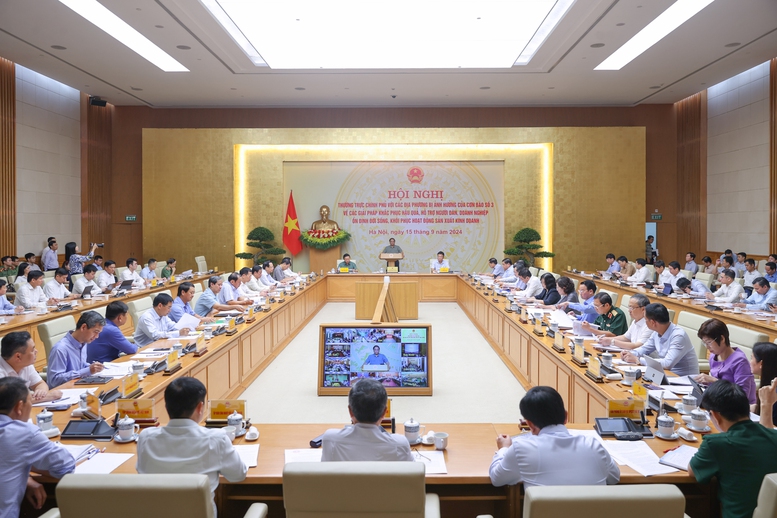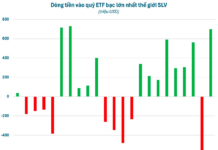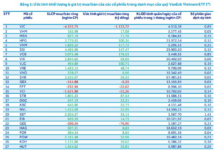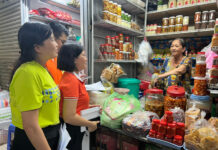
On September 15, following the instructions of the Politburo, Prime Minister Pham Minh Chinh chaired a conference on promptly overcoming the consequences of Super Typhoon Yagi, quickly stabilizing the people’s lives, restoring production and business activities, and promoting growth.
The conference was connected online from the Government Office to the affected localities. Deputy Prime Ministers, leaders of ministries, sectors, and central agencies, as well as secretaries and chairmen of provincial People’s Committees, also attended the conference.
In his concluding remarks, Prime Minister Pham Minh Chinh conveyed the inquiries, sympathies, and condolences of the Politburo, the Secretariat, the Party and State leaders, especially the General Secretary and President To Lam, to the agencies, localities, and units, as well as to the families of those who died, went missing, or were injured due to the super typhoon.
The Prime Minister choked up and burst into tears several times when referring to the devastation, severe consequences, and losses of the people and the country.
This was the second conference of the Government Standing Committee after the typhoon. The Prime Minister highly appreciated the active and close coordination of the ministries, agencies, and localities in preparing for the conference and the heartfelt and responsible opinions at the conference, which were practical and realistic.
The Prime Minister assigned the Ministry of Planning and Investment to coordinate with the Government Office in collecting the opinions of the ministers and chairmen of the provincial People’s Committees to report to the Government and issue a resolution on overcoming the consequences of the super typhoon, stabilizing the people’s lives, restoring production and business activities, controlling inflation, and promoting growth.
The Prime Minister requested that the resolution be issued by tomorrow, September 16, for implementation according to the authority, functions, tasks, and powers of each agency.

This was the second conference of the Government Standing Committee after the typhoon. The Prime Minister highly appreciated the proactive and close coordination among the ministries, agencies, and localities in preparing for the conference. The opinions at the conference were heartfelt, responsible, and practical – Photo: VGP/Nhat Bac
Great Efforts in Response to the Historic Super Typhoon
The head of the Government evaluated that Super Typhoon Yagi was a historic typhoon with the following characteristics: very strong intensity with gusts of up to 17, high speed, large destructive power, very wide range, multiple impacts (people, property, crops, livestock, socio-economic infrastructure), long duration over land with wide-ranging impacts, terrifying landslides, flash floods, and severe consequences in terms of human and property losses.
In reality, the forecasting and warning work was basically accurate, except for some elements such as the aftermath of the typhoon’s outer bands, which were not entirely precise. The leadership and direction in responding to and overcoming the consequences of the typhoon were very synchronous, drastic, and well-organized under the leadership of the Party and the management of the State, with the participation of the entire political system, the consensus of the people and businesses, and the support and cooperation of international friends and partners.
The Politburo issued Conclusion No. 24-KL/TW on September 9. The General Secretary and President To Lam, along with other Party and State leaders, provided timely guidance, visits, and solutions at the scene. The Standing Government held meetings, discussions, and direct and indirect exchanges. Government leaders also went to the scene in the affected localities.
The Prime Minister issued nine dispatches and directed the timely and effective handling of the situation, especially sudden and unexpected developments such as flash floods, landslides, bridge collapses, dam breaks, etc. A forward command post for typhoon response was also established in Hai Phong.
The forces guided more than 50,000 fishing vessels to safe shelters, evacuated about 53,000 people from floating cages and houses, and relocated about 80,000 households with more than 130,000 people in flooded areas to safe places. Nearly half a million people and 6,600 vehicles were mobilized to respond to the typhoon, along with more than 100,000 people and over 2,100 vehicles to cope with floods, landslides, and flash floods.
However, Typhoon No. 3 and its outer bands still caused severe losses of life and property. So far, there have been more than 350 deaths and missing persons and more than 2,000 injured. In addition, 230,000 houses, many headquarters and offices, schools, and medical facilities were damaged; nearly 70,000 houses were flooded; over 190,000 hectares of rice, 48,000 hectares of crops, and 31,000 hectares of fruit trees were inundated; more than 3,000 floating cages for aquaculture were damaged or washed away; more than 21,000 cattle and over 2.6 million poultry were killed. Many infrastructure works were also devastated. Landslides, floods, and local traffic disruptions occurred in most localities.

The Prime Minister assigned the Ministry of Planning and Investment to coordinate with the Government Office in collecting the opinions of the ministers and chairmen of the provincial People’s Committees to report to the Government and issue a resolution on overcoming the consequences of the super typhoon – Photo: VGP/Nhat Bac
The work of overcoming the consequences of the typhoon and floods has been regularly directed by the key leaders of the Politburo and the Secretariat, directly by the General Secretary and President To Lam.
The Government has provided support to the localities with more than VND 350 billion and 300 tons of rice, among other things, and is continuing to gather statistics to provide further assistance. The Central Committee of the Vietnam Fatherland Front organized a ceremony to launch a campaign to support people affected by the typhoon, with a total amount of over VND 1,000 billion so far.
Analyzing the reasons why the typhoon caused such great losses, the Prime Minister stated that, in addition to objective reasons, there were still cases of subjective treatment, a lack of strict compliance with the directions and recommendations of the functional agencies, and a lack of decisiveness in leadership and direction in some cases. In addition, the means and equipment for natural disaster response, search and rescue were not up to the task in some places…
The Prime Minister emphasized some lessons learned: It is necessary to closely follow the situation and make accurate forecasts; propaganda and mobilization work must be fast, timely, and widespread; and direction and administration must be timely, accurate, appropriate, and effective. The ministries, sectors, and localities must be proactive and active in implementing the “three pre-emptive and four on-site” motto in natural disaster prevention and control and overcoming their consequences. Put the people at the center and as the subject, and prioritize the people’s lives and health above all else. Mobilize the strength of the entire political system with the Party’s leadership, the State’s management, and the people’s mastery.
“We have made every effort. We have sought the best option among the possible ones, and we have found something left in the loss… But the loss of life and the people’s spirit is irreparable,” the Prime Minister said emotionally.
On behalf of the Party and State leaders, the Prime Minister acknowledged, appreciated, and praised the ministries, sectors, and localities for their high sense of responsibility, great efforts, and resolute actions to achieve the best possible results. He also thanked the people for their collaboration with the Party committees, authorities, and forces, especially the army and police. At the same time, the Prime Minister requested that emulation and reward work be done well for organizations and individuals who have performed well, especially those who have sacrificed their lives in the performance of their duties, and that criticism and strict handling be applied to cases of subjectivity and negligence in performing tasks.

The Prime Minister choked up and burst into tears several times when referring to the devastation, severe consequences, and losses of the people and the country – Photo: VGP/Nhat Bac
Striving for an Economic Growth Rate of about 7% for the Whole Year
The head of the Government emphasized the following goals: Ensure that no one goes hungry or thirsty, gets cold, or lacks clean water or basic necessities; effectively overcome the consequences of Super Typhoon No. 3; quickly stabilize the people’s lives in terms of both spirit and material; restore production and business activities; control inflation effectively; and strive for an economic growth rate of about 7% for the whole year. At the same time, maintain political stability, social order and safety, and a peaceful and stable environment for cooperation and development.
The Prime Minister specified six groups of tasks and solutions for the near future.
First, there are six urgent tasks and solutions to overcome the consequences of the typhoon:
Search for missing persons and provide treatment for the injured. Arrange temporary accommodation for those who have lost their homes or have damaged houses, and provide food and clean water for the people; provide treatment for the sick.
Inspect and, by all means, reach out to areas that are cut off and isolated to support and supply the people. Mobilize the entire political system and the people to clean up and sanitize the environment and prevent epidemics. Ensure that there is no power or telecommunications disruption and that essential services are maintained. Repair medical and educational facilities so that children can return to school and patients can be treated.
Second, there are eight solutions to stabilize the situation for the people:
Inspect and assess the damage to the people and the State, and provide immediate support to the affected people, trying to stabilize them on the spot, such as arranging accommodation in the commune’s cultural house or the local police and military headquarters.
Visit, share, support, and handle the aftermath for the unfortunate ones; implement policies as prescribed. Inspect and review the communes that have been buried, and the families that have lost their homes, and arrange for them to resettle in safe places, with a deadline of December 31, 2024, requiring that the new residence must be better than the old one, with solid foundations, walls, and roofs.
Inspect and repair schools and equipment so that all students can return to school in September. Ensure smooth traffic connections and promote social security work, leaving no one behind. The localities shall assess the damage and propose support for the families. Consider exempting or reducing tuition fees for affected students.

Deputy Prime Minister Nguyen Hoa Binh attends the meeting at the Dak Lak provincial branch – Photo: VGP/Nguyen Huang

Deputy Prime Minister Tran Hong Ha speaks at the meeting – Photo: VGP/Nhat Bac

Deputy Prime Minister Le Minh Khai speaks at the meeting – Photo: VGP/Nhat Bac
Third, there are solutions to restore production and business activities:
The Prime Minister requested that the damage to production and business facilities be inspected and assessed to restore crop and livestock farming and business services, especially credit policies, support for seeds and fertilizers for agriculture, support for the restoration of service types, and restoration of industrial production, preventing disruptions in supply chains and production chains. There should also be solutions to increase transportation types and reduce freight rates, and restore warehouses and goods yards; and regulate the operation of hydropower and irrigation works in flood discharge and water storage.
The Prime Minister requested that the State Bank and the banking system study policies on debt rescheduling, debt restructuring, and debt freezing, as well as soft loans and zero-interest rate packages. The Ministry of Finance should study the reduction, extension, and exemption of taxes, fees, and charges. The Ministry of Industry and Trade should ensure the supply of materials and inputs for production and business activities. The Social Policy Bank should have a plan to lend to households, and the insurance sector should promptly settle the damage of businesses and people…
Fourth, there are solutions to promote growth and control inflation:
It is necessary to promote public investment disbursement, national target programs, ensure budget revenue, and provide sufficient fuel, electricity, and water. Use support for overcoming the consequences of the typhoon effectively, and prevent corruption, waste, and profiteering. Provide sufficient goods and raw materials for production and business activities, control prices, and prevent hoarding and price gouging, taking advantage of difficulties to profit. Focus on the three traditional growth drivers (investment, export, and consumption) and promote new growth drivers. Restructure crops and livestock, and restructure production and business activities suitable to the conditions of each locality. Continue to diversify markets, products, and supply chains.
The Prime Minister assigned the Ministry of Planning and Investment and other relevant agencies to build and implement a program to overcome the consequences of the typhoon and floods, restore production and business activities, and promote growth, reporting to the competent authorities for consideration and decision to implement.
The Ministry of Agriculture and Rural Development should build a project to prevent salt intrusion, landslides, and subsidence in the Mekong Delta. The Ministry of Natural Resources and Environment should build a project to survey, assess, and prevent landslides nationwide.
The agencies should also build mechanisms and policies to encourage the breakthrough development of certain industries and fields, such as the semiconductor chip industry, free trade areas, and financial centers…
“Unveiling the Secrets of a High-Tech Project: A Proposal for a Revolutionary Approach”
The Ministry of Planning and Investment has proposed a special investment procedure for high-tech projects, with a swift 15-day approval process. This bold move aims to foster innovation and attract cutting-edge technology ventures to the country. By streamlining the investment process, the Ministry seeks to create a dynamic and conducive environment for high-tech enterprises, accelerating their growth and contribution to Vietnam’s economic development.
Great News from Ninh Binh
The socioeconomic situation in the region has continued to flourish in the first eight months of the year.
The International Food and Beverage Ingredients Exhibition
The food and beverage (F&B) industry in Vietnam is a key driver of economic growth and food security in the country, and the F&B ingredients sector plays a pivotal role in this success story. With an impressive average annual growth rate of 10-12%, the F&B ingredients industry has become a powerhouse, fueling not just the economy but also ensuring that Vietnam’s food security needs are met.











































